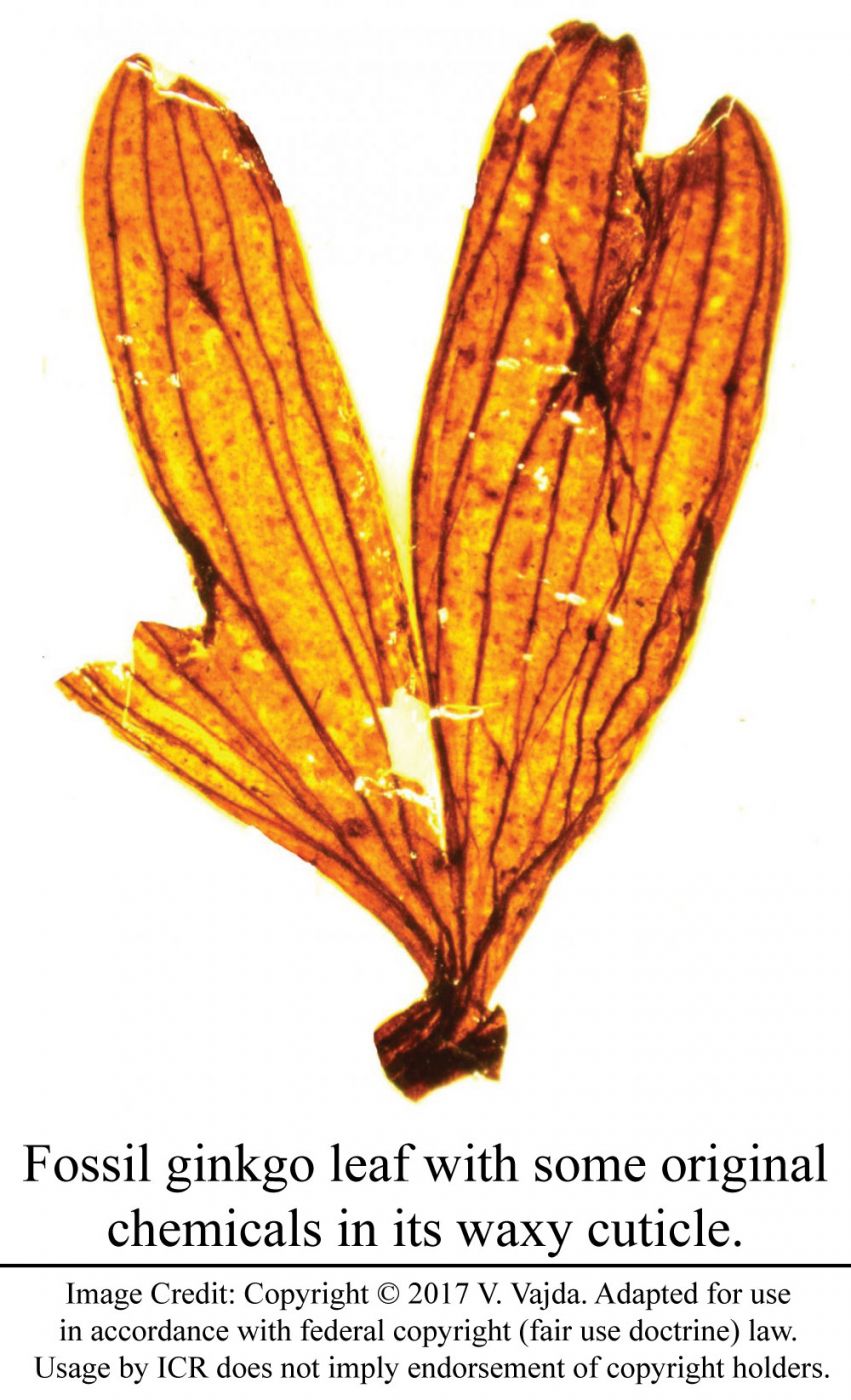Researchers shined a laser light on fossil leaves and found some surprising results. Instead of mere impressions of leaves, the fossils turned out to contain original molecules—persisting after millions of supposed years.
Research led by Lund University in Sweden used FTIR to find original molecular bonds still intact inside fossilized leaf wax. The technique detects stretches in specific chemical bonds.
Then the team compared the waxy cuticle that somehow persists in leaf fossils with the same cuticle molecules found in their living counterparts. Many of the scan results showed a match, even after all the years those fossils remained underground. The team published their results in Nature: Ecology & Evolution.1
They scanned leaves from living Araucaria trees—tropical conifers that today grow in New Guinea, Australia, and Argentina—and from fossil Araucaria leaves locked in Cretaceous stone. Only the living leaves had FTIR signatures indicating complex sugars like cellulose, but surprisingly the technique revealed the same alkanes, alkenes, and carbon-based ring structures in both living and fossil Araucaria.
Alkenes have double bonds. These tense bonds react more readily with other chemicals than many single bonds. They have not yet reached what chemists call thermodynamic stability—when they lose their potential to react. How can so much chemical potential persist in leaf molecules that are supposedly millions of years old?
Lund University News wrote, “The [waxy] membrane has been preserved in the fossil leaves, some of which are 200 million-years-old.”2 This age assignment clearly conflicts with short-lived original plant chemical bonds.
The second surprising result came from scan results between several fundamentally different kinds of plants. They found that specific chemical bond signatures signified the same basic plant kinds. For example, fossil and modern Araucaria had unique chemicals not shared with ginkgos. Lead author Vivi Vajda told Lund University,
The results from the fossil leaves far exceeded our expectations, not only were they full of organic molecules, they also grouped according to well-established botanical relationships, based on DNA analysis of living plants i.e. Ginkgoes in one group, conifers in another.
So they didn’t expect to find original organic molecules after supposed millions of years, nor did they expect to find those same molecules in similar plant kinds. It was as though millions of years of evolution never changed these plants’ basic forms or even their basic molecules.
Could ginkgos remain ginkgos and Araucaria remain Araucaria because they have been reproducing faithfully within separately created kinds from the beginning of creation?
The original biomolecules in fossil leaf cuticles point to their deposition thousands of years ago, not millions. Also, biochemical similarities between ancient and modern plants of similar groups show no hint of evolution, but fit just fine with the created kinds of Genesis 1:12.3
References
- Vajda, V. 2017. Molecular signatures of fossil leaves provide unexpected new evidence for extinct plant relationships. Nature: Ecology & Evolution. DOI: 10.1038/s41559-017-0224-5.
- Through fossil leaves, a step towards Jurassic Park. Lund University News. Posted on lunduniversity.lu.se July 4, 2017, accessed July 24, 2017.
- "And the earth brought forth grass, the herb that yields seed according to its kind, and the tree that yields fruit, whose seed is in itself according to its kind."
*Mr. Thomas is Science Writer at the Institute for Creation Research.
Article posted on August 3, 2017.










